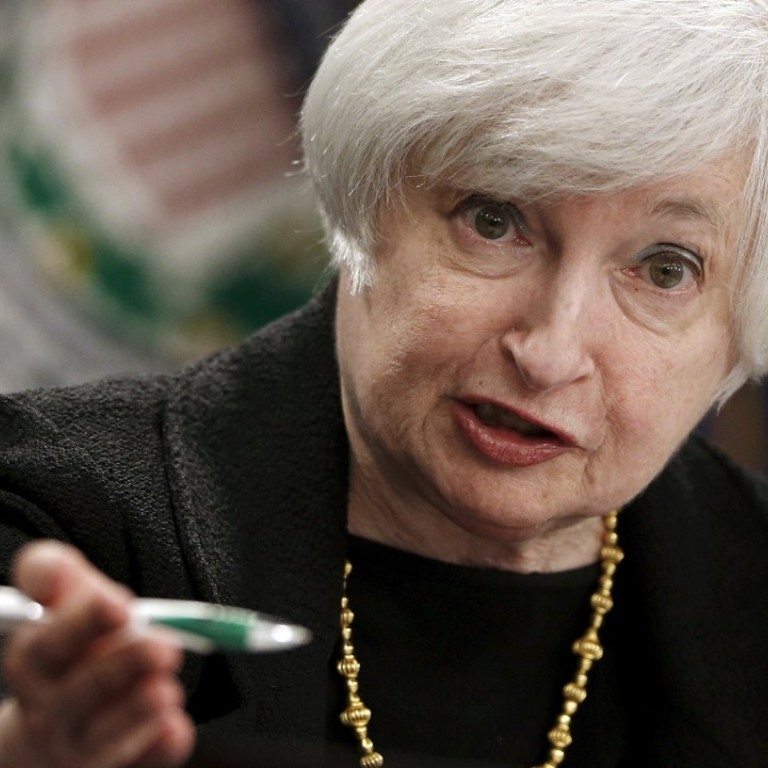
Central banks or markets – who’s more afraid of whom?
Signs that central banks are tilting in a more hawkish direction come at a time when key gauges of inflation have been falling
First came the sell-off. Now comes the postmortem.
The sharp increase in government bond yields since the end of last month stemming from the flurry of hawkish commentary from some of the leading central banks has investment strategists scratching their heads as to the precise reasons for the apparent shift in monetary policy and what it portends for global markets in the coming weeks and months.
The moves in benchmark borrowing costs have been dramatic. Yields on German and US 10-year bonds have shot up 27 and 18 basis points respectively since June 26. A whopping US$680 billion was wiped off the value of the Bloomberg Barclays global-aggregate total return index, a leading global bond index, last week, the sharpest weekly decline since Donald Trump’s shock victory in the US presidential election in November.
Make no mistake, financial conditions have eased significantly in the face of a withdrawal of stimulus by the Fed
Yet signs that central banks in advanced economies are tilting in a more hawkish direction come at a time when key gauges of inflation have been falling. Headline inflation in the euro zone has dropped back to 1.3 per cent while the Federal Reserve’s preferred gauge of consumer prices has declined to 1.4 per cent, significantly below both institutions’ 2 per cent target.
This is fuelling speculation that leading central banks, in particular the Fed, are starting to attach more importance to the prices of financial assets in their deliberations over monetary policy.
There are ample reasons for policymakers to be concerned about valuations across asset classes.
Since the Fed raised interest rates for the first time in nearly a decade in December 2015, the S&P 500 Index has risen a further 20 per cent, hitting a series of record highs. According to the most popular valuation measures, US stocks are overvalued. The benchmark 10-year Treasury yield, moreover, is now 60 basis points lower than at the height of the so-called “taper tantrum” in September 2013, when the Fed had not even begun to withdraw stimulus yet.
Meanwhile, emerging-market stocks have surged nearly 30 per cent since the Fed’s first rate rise, while spreads on corporate bonds in developing economies have narrowed sharply and are at their tightest levels since the 2008 global financial crisis.
Policymakers are right to be concerned about pockets of froth in markets
Make no mistake, financial conditions have eased significantly in the face of a withdrawal of stimulus by the Fed.
While rising asset prices and low volatility have made it easier for the US central bank to raise rates, policymakers, including Fed chairman Janet Yellen, are increasingly concerned about stretched valuations, particularly in the frothy US equity market.
This begs the question of whether financial excesses – which were brought about by central banks’ ultra-loose monetary policies – now pose a bigger threat than a surge in inflation, which forces central banks to withdraw stimulus more sharply.
The Bank for International Settlements, in its annual report published last month, warned that unsustainable growth in asset prices (as opposed to a surge in inflation) poses the biggest risk to the global economy.
Goldman Sachs is even more blunt. It believes the so-called “Fed put” – the perception among investors that central banks will prop up asset prices during periods of financial turmoil – has been replaced by the “Yellen call”, or a more aggressive withdrawal of stimulus in an effort to prevent asset bubbles from developing.
Not so fast.
While central banks, in particular the Fed, keep a close eye on valuations, they do not target asset prices. Nor should they
While central banks, in particular the Fed, keep a close eye on valuations, they do not target asset prices. Nor should they. If inflation were to remain subdued – which for a number of reasons, notably lacklustre wage growth, is entirely conceivable – central banks would lose credibility if they moved in a more hawkish direction. Indeed bond investors believe the Fed is already on shaky ground by sticking to its plan to keep raising rates despite the drop in consumer prices.
On Wednesday, Yellen admitted that low inflation was a source of considerable uncertainty for the Fed.
Just as importantly, research from the International Monetary Fund suggests central banks should avoid using interest rates to “lean against” asset price booms and instead “deploy supervisory and regulatory tools” to tackle financial stability risks.
Moreover, by seeking to deflate potential asset price bubbles, central banks could easily precipitate a sharp and disorderly sell-off at a time when markets are ultra-sensitive to even the slightest hint of a withdrawal of stimulus.
Policymakers are right to be concerned about pockets of froth in markets, but it is investors who have more to fear from the leading central banks as they begin their exit from years of ultra-loose monetary policies.
The recent jitters in bond markets should make this patently clear.
Nicholas Spiro is a partner at Lauressa Advisory

